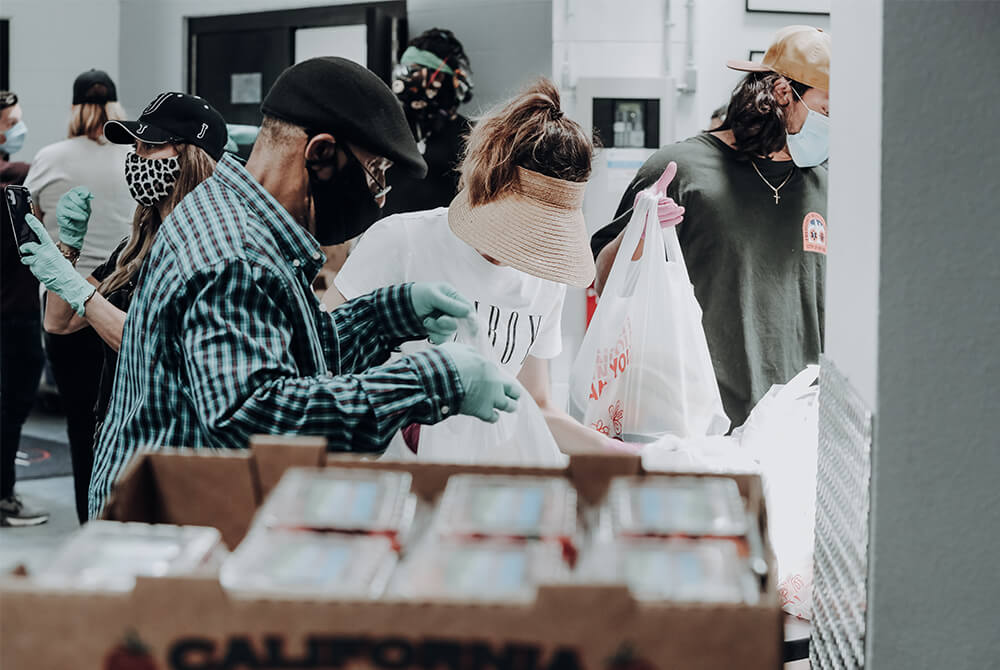
Donor Relations 101: Bringing Donor Experience Full-Circle
Donor relations is all about making sure that a donor’s experience goes beyond gifting. This requires an organization’s proactive involvement in cultivating long-lasting engagement through communication and appreciation efforts. However, many organizations continue to struggle. The aspects of timing, balance, and necessary effort that accompanies the topic of donor relations are all difficult.
Failing to properly address the donor experience will lead to high attrition (donor loss) rates. Unfortunately, the average organization suffers an attrition rate of 55%, but your organization can see major improvements with basic changes.
To help guide the implementation of an upgraded donor relations strategy, there are multiple important considerations that will help you bring create a donor experience that engages individuals from before the first donation is even made and continues to promote passionate activism on behalf of your organization.
1. Segment Your Donors Properly
If you think the administrative side of gifting isn’t important to the experience of your donors, think again. In order to offer an outstanding donor experience that will enable you to build a lasting relationship with your donors, you must start by properly segmenting everyone who donates time, money, or both. You must perform this segmentation based on a variety of metrics. These include how much donors give, how they give, and how long they have been with your organization.
Segmenting your donors properly will allow you to better engage donors. It also gives you a more solid understanding of who is gifting what, what donors want their gifts used for, and who you’re going to have the best luck turning to in the event that you need a major gift in the future.
The segmentation will also help you in the following steps that directly impact the donor experience, like deciding when to reach out and what to say. This is great news, since personalizing emails alone can improve click-through rates by 14% and increase conversion rates by 10%. So, just imagine how segmentation can also help inform other donor interactions and get you better results.
2. Utilize Many Forms of Acknowledgment

Many organizations put all of their efforts into asking for donations, yet the follow-up after collection often gets neglected. This can leave donors feeling more than unappreciated, it can lead to them feeling disconnected from your organization as a whole. That’s why you must acknowledge donations, but it’s not just about the act of following-up, it’s about how you do it.
There are many different avenues for acknowledgment that you could be utilizing and there’s no one-size-fits-all choice. In fact, looking back at your donor segmentation metrics might help you decide which follow-up method to use when. For instance, those who donate by mail will most likely prefer to receive a handwritten note acknowledging their donation. Meanwhile, those who give online may prefer an email. At the same time, there are also certain donors who would prefer a phone call and a short chat.
You can also take acknowledgment outside of personalized, direct forms (which are essential). For instance, you should take the time to take your appreciation public, whether you are individually thanking your top donors in your monthly newsletter or providing more general acknowledgment on your social media pages. You can even utilize push notifications. When it comes to acknowledgment, the trick is to look at it as an on-going activity, not a one-off event.
3. Know When to Acknowledge and What To Say
Once you recognize the importance of acknowledgment and you begin navigating the many ways in which you can acknowledge a donor, the next step is knowing when the best time is to make that call, write that email, or send out that note. You need to follow-up in a timely manner, preferably the day of or day after receiving their gift. This will help them recognize how much you value their donation.
When it comes to what you should say, that also should change based on where you are at in the relationship with the donor. If they are a new donor, consider sending a welcome package that introduces them to your staff, your services, and the success stories of past projects. You can also invite them to get involved in other ways.
Meanwhile, those who have donated before also deserve acknowledgment, and the best thing to do in that situation is telling them specifically why it’s important that they continue on with their faithful giving. Additionally, being able to offer detailed insight into how their donations have made an impact so far will help reinforce their habit of gifting.
5. Share Personalized Reports

When appreciating a donor, the focus should always be on highlighting how the donor has made an impact. Answer the questions they’re wondering, like where their money goes to and what difference it actually makes. More than that, include numbers that help summarize and highlight their donations at a glance.
Whether a donor has made one donation or hundreds, including “lifetime giving summaries” and other insightful reports will help them recognize the difference they’re actually making. These personalized reports are also important for your own analytical purposes. You should already have them in your system. This means it won’t be tough to mail them out to your donors once a quarter or once a year.
4. Use Events and Parties to Cultivate Relationships

Phone calls, letters, and emails can only go so far. Your donors deserve hands-on interaction with your organization and the team they support. An annual appreciation party, however, is just one idea you could utilize. Consider special one-off events as well. You can use these opportunities for more than just a platform for appreciation. They’re also great for introducing your donors to the impact they have and the other ways they can involve themselves with your organization.
Every event should center around acknowledging the things your donors have made possible. You should also help them see the difference their donations are making. As an example, consider a situation where you used donations to raise money for a mission trip. Your event could introduce the donors who made the trip possible to those who attended. The missionaries can share the stories with donors about the trip and the work they did.
Many organizations also have great success scheduling one or more donor celebrations throughout the year. These truly work to make donors feel like celebrities. After all, these are the people who keep your organization running, so why not throw a party they’ll remember? Not only will “exclusive” events like these encourage more people to get involved with your organization, it will truly make your donors feel appreciated and needed.
Go Beyond Donor Experience With DonorWERX
If your organization’s giving strategy isn’t being closely developed alongside your communication strategy, you are not addressing the full picture of the donor experience. With DonorWERX, your organization will be able to see and understand the complete journey a donor takes when deciding to make a donation. More than that, you’ll be able to guide them and usher them along the path to becoming an organizational advocate. Click here to learn more.


